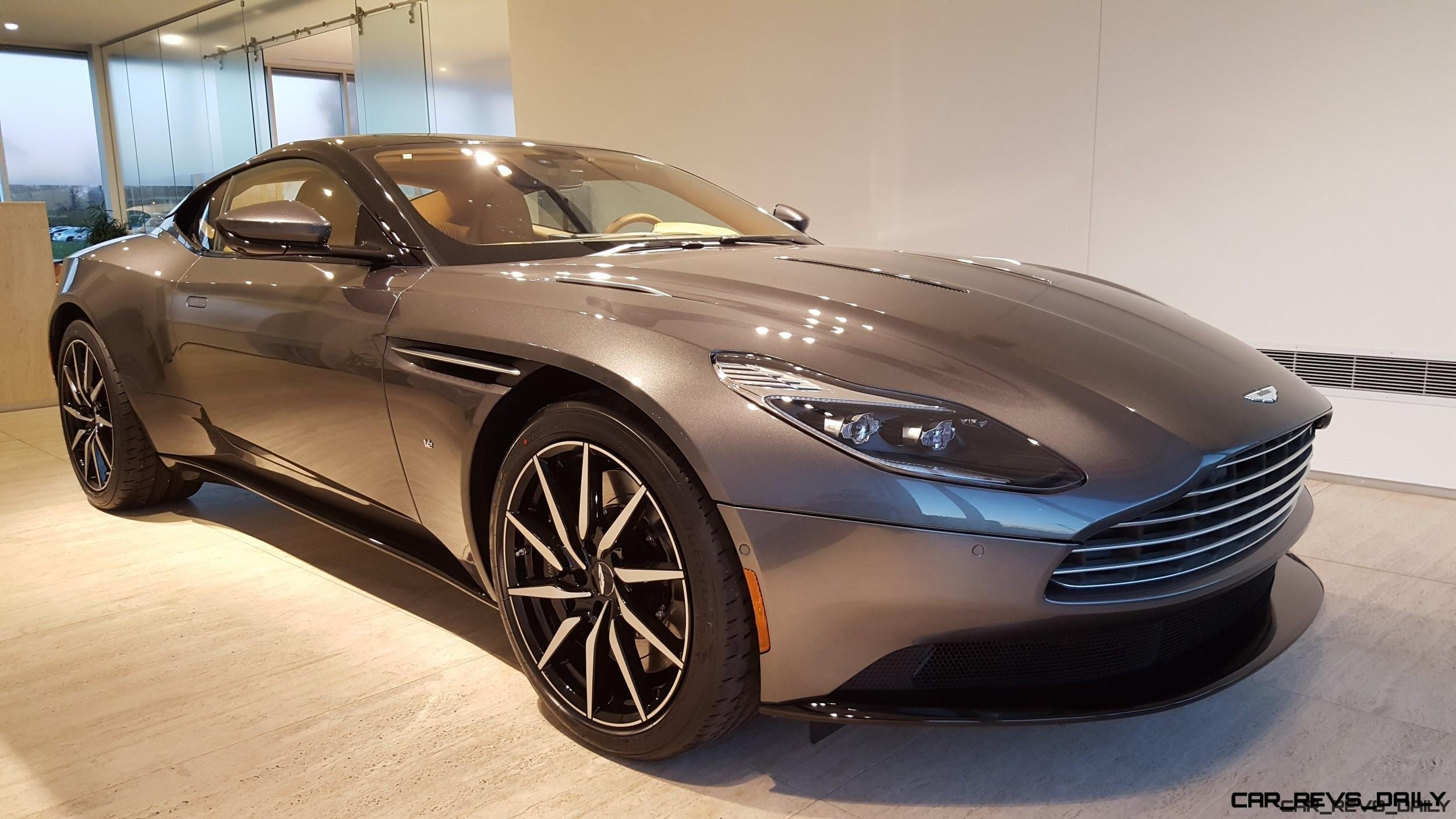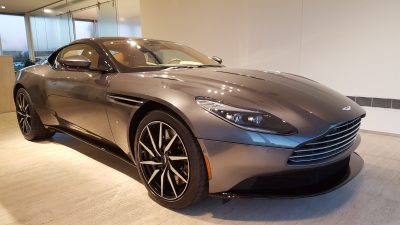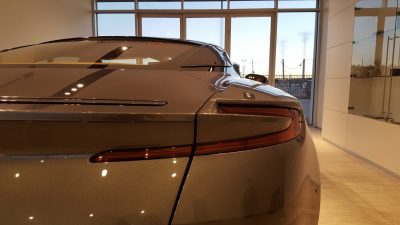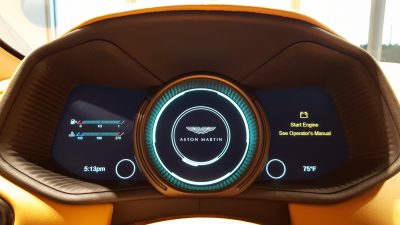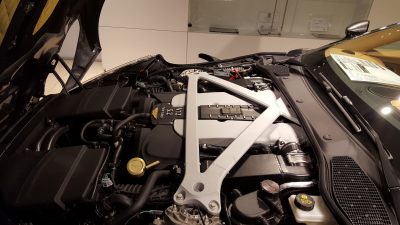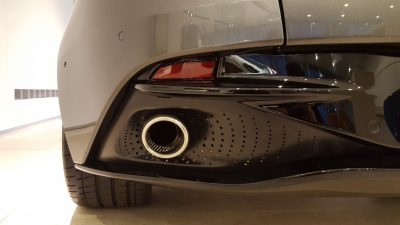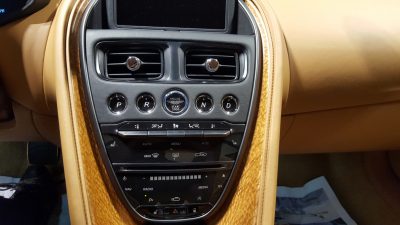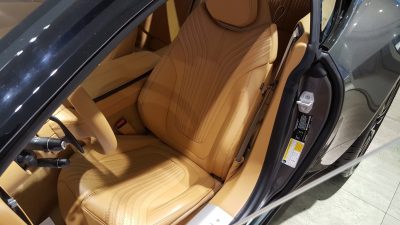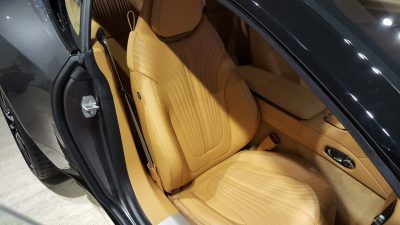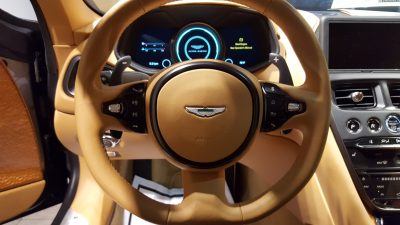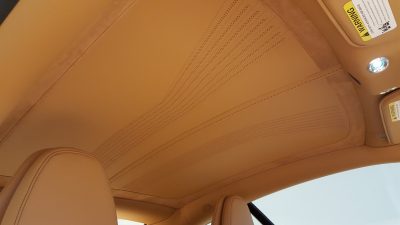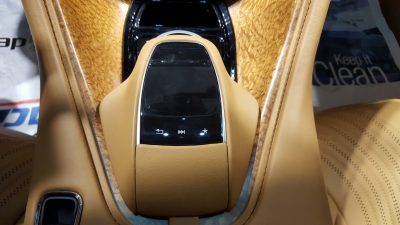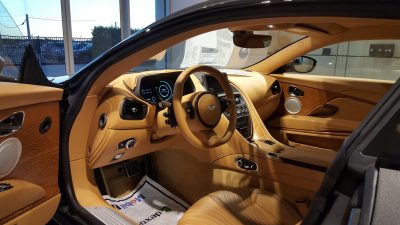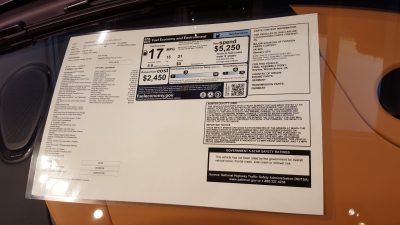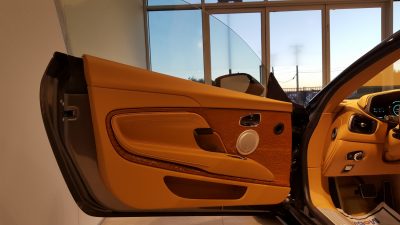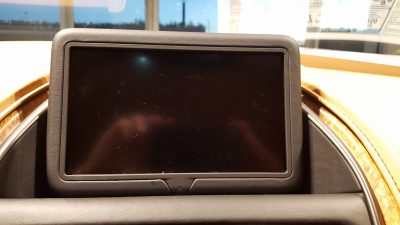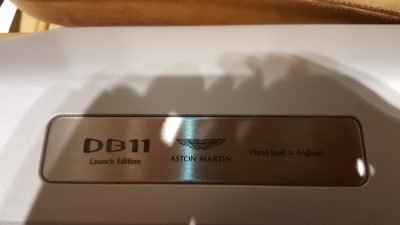When Aston Martin first unveiled the 2017 DB11 coupe, it represented a monumental shift for the British supercar maker. Aston Martin has always been known for its unique heritage, but lacked a versatile stable of fresh product to truly standout against supercar benchmarks like Lamborgini and Ferrari. The 2017 DB11 looks to change all that thanks to its revamped styling, performance and technology. This special car heralds a promising future for the brand, but will all of its new tricks help it cement a spot in the hearts and wallets of Aston loyalists? Or does it miss the mark?
To find out we visited our friends at Suburban Aston Martin of Troy in Troy Michigan, and spent some quality time with the sleek two door. Aston Martin products have always had a particular flavor to them embodying the rich heritage that has defined the iconic brand’s history while also being a niche offering that caters to the tastes of a select few. The DB11’s exterior styling certainly does a good job embodying this delicate combination, and is a big improvement over the DB9. The DB11 is a car that relishes in being long, low, and extraordinarily wide but wheras the DB9 preferred to be known for having a more organic inspired shape, the DB11 is a more technical piece with LED light blades, beveled edges splashed here and there, as well as its distinctive roof strake which tastefully cleaves the steeply raked C-pillar (an Aston trademark.)
Unlike other strakes of this type which are mostly for show, this one has a purpose, and helps frame the Aeroblades which is Aston speak for the rear mounted air ducts that help channel air throughout the body before forcing it out of a vent in the trunk lid which supposedly helps reduce drag. Another radical departure is the all new one piece aluminium clamshell hood which steals a page out of the C4 Corvette playbook in terms of its overall execution. While we’ll miss the conventional hood that defined the DB9 and made taking photographs of its lovely V12 engine easier, this new unit was designed to deliver both the clean lines that buyers crave, and the higher levels of pedestrian protection that many countries have mandated for consumer vehicles.
While this is indeed an impressive engineering achievement, the one complaint we had was centered around the hidden button for unlatching the fore-mentioned hood. The button is mounted close to the door sill, and can be very hard to spot though it will not top the equally annoying, but easier to find floor mounted button for the fuel door on its predecessor as well as the smaller Vantage. Personally we wish Aston would’ve have stuck with a conventional hood release mechanism versus an electron powered one, but we did like the soft close feature that helps make sure the hood is tightly closed. Being a clamshell type hood, it behaves much like the Jaguar F-type’s which means that owners showing off the car’s performance hardware will have to push on the center of the hood while closing to ensure an even fit versus on the corners.
The interior of the DB11 is its most impressive trump card and is a big step up from the DB9’s cabin. This is evident in the richer leather accents that are splashed throughout the cabin, and the supple leather seats which look good and are more comfortable than before. However, the new thrones do sacrifice some side support to achieve it, which could be noticeable during spirited driving. The DB9’s outdated navigation system has been pitched, and in its place is an all new Mercedes sourced unit that delivers sharper feedback and reduced lag when accessing various menus. The digital gauge cluster also looks slick and does a good job embodying a futuristic flair to its function oriented purpose.
The three spoke steering wheel does lack some of the subtle sportiness that defined the DB9’s tiller, but it still feels good in the hands, and should please buyers looking for more comfort. Like the DB9 you sit very low in the cabin, but visibility is still decent except for the chunky A-pillar. The rear seats are still better suited for hauling cargo versus people but should mesh nicely with the DB11’s decently sized trunk.
Aston Martin takes pride in labeling itself as a V12 company, and while rumors of a smaller AMG derived V8 are still running rampant, the first Launch Edition models like our photo car “make do” with an all new 5.2 liter twin-turbocharged V12 engine. While it is smaller than its 6.0 liter naturally aspirated predecessor, the engine makes up for it by delivering 600 horsepower and a hearty 516 lb-ft of torque. While we will have to wait until warmer weather returns to delve deeper into its performance capabilities, Aston claims that the DB11 can make the sprint to 62 mph in 3.9 seconds, and hit a top speed of 200 mph both of which are on par with rivals. An eight speed paddle shifted automatic is the sole transmission offering here for the moment, but look for more hardcore versions of the DB11 to perhaps embrace a manual alternative in the near future.
Pricing for the 2017 Aston Martin DB11 Launch Edition starts at $230,345 for the base model, with our Magnetic Silver photo car having a final MSRP of $255,679. This was thanks mainly in part to its $3,086 destination fee as well as its jaw dropping $22,248 laundry list of optional equipment. A few highlights included the $750.00 “Celestial Perforation” treatment for the leather headliner, $2,270 Brouge Detailing, and $570.00 Mocha hued seatbelts.
Overall the 2017 Aston Martin DB11 is a notable improvement over the DB9 in virtually all categories. Its all new design language is a stylish evolution of familiar Aston Martin traits, and the revamped interior eliminates the dated elements that hobbled its predecessor. It will be interesting to see what the future has in store for the DB11, but based on first impressions, it looks like the British supercar maker has a winner on its hands.
A special thank you to Suburban Aston Martin of Troy for allowing us to photograph and spend time with the 2017 Aston Martin DB11 Launch Edition featured in this article.

Carl Malek has been an automotive journalist for over 10 years. First starting out as a freelance photographer before making the transition to writing during college, his work has appeared on numerous automotive forums as well as websites such as Autoshopper.com.
Carl is also a big fan of British vehicles with the bulk of his devotion going to the Morgan Motor Company as well as offerings from Lotus, MG, and Caterham. When he is not writing about automobiles, Carl enjoys spending time with his family and friends in the Metro Detroit area, as well as spending time with his adorable pets.

